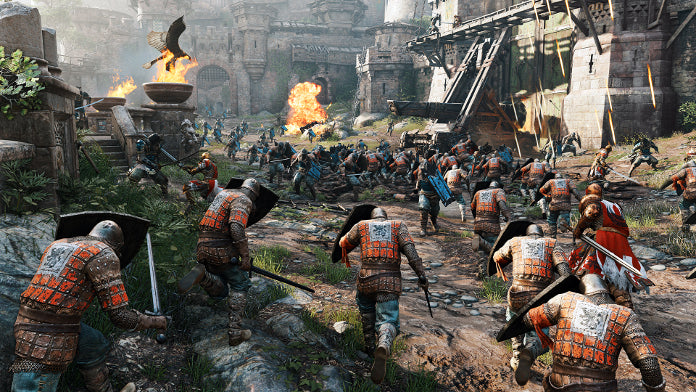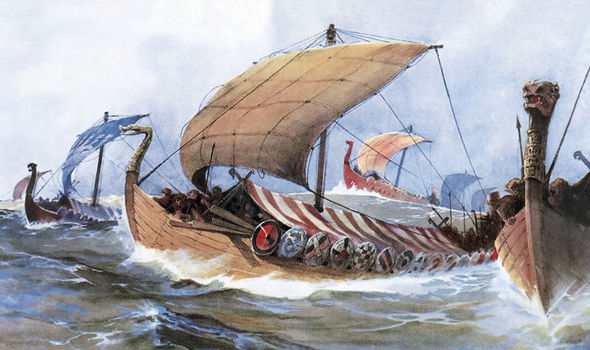Vikings were seen as the strong men of their time of history. this was during a time of gods an beasts as well as other fables and the savagery and strength of a Viking might have just clocked them in at the top. Besides what the texts said about their intellect and their pillaging methods understanding how they exude their type of prowess comes first as surmised by Donna Kemp.
" Vikings were known as one of the bravest warriors in history. But is this really true? Or do we just think this way due to modern TV shows and video games? Holding their own religion and beliefs played a huge role in their autonomy and strength. For the most part, the Vikings lived as farmers and did not migrate from their homeland. Until the time of the “Viking Age” struck did the Vikings start to raid lands further out. They raided for several reasons. Mostly it was for the loot or land ownership while others were more adventurous and were seeking fame and glory. The Vikings extended their reach and started attacking nearby kingdoms, such as the kingdoms West from their homeland and occasionally the East also. Their first target was the English Anglo-Saxon kingdoms, which weren’t united under one rule and were in constant conflict with each other. They were weak and unorganized. The Norsemen were not very well known. They traveled by sea which gave them the element of surprise. There was no one to warn the English about the upcoming attacks. English monasteries, villages, and even small cities were attacked."

What gave the Vikings their edge was their rich culture and religion? The Viking mentality was strongly perpetuated by their religion. They believed when they die, they enter through the gates of “Valhalla” as true warriors. The Vikings strongly lived by their religion. Such beliefs encouraged the Vikings to fight until the end and die with honor. The idea of an afterlife left the Vikings fearless. Whilst their opponents’ priority would be survival and returning home. The Vikings also had a slight physical superiority as well. They were physically stronger and slightly taller than their opponents. As for Viking equipment, it was not advanced at all. They used round shields, axes, swords, and spears. The famous knife they had was called the Seax. Their armor was not advanced as well. It consisted of chainmail, helmet, Lamellar, and cloth with leather. This gave them decent protection. However, a volley of arrows could do some serious damage despite their shields. While they may be considered advanced for their time, there are many variables one must consider which gave the Vikings an advantageous edge over their opponent.

So because of this, does that mean they were also unmatched in warfare as well? Most of their mythos comes from surprise attacks, could they win a fight had it been army to army, man to man with no decisive advantage of surprise?
Kristian Sjøgren says that, " Although Vikings were feared throughout Europe, they did not win all of their battles – far from it – even though many people seem to think so. In fact, the sources also document how raiding Vikings suffered major defeats when they invaded foreign kingdoms and territories. “Many archaeological and written sources show that the Vikings lost quite often. We’ve, for example, found a couple of Viking mass graves, which tell a story of failed raids,” says Roesdahl. That said, there is no doubt that the Scandinavian warriors were rather successful in most of their endeavours. The plundered treasures from monasteries, villages, and even major cities witness as much.
Now it’s time to look at the military hardware.
Archaeological findings show that the Vikings had everything required of a terrible foe. Their axes, swords, spears, bows and arrows, shields, and armour were equal to the weapons and armours of continental Europe and Britain – and often of the highest quality available at the time.,“In fact, many of the swords used by Vikings came from Frankish swordsmiths, who produced exceptionally good swords. But as the Frankish rulers began to realise that their own weapons were being used against them, they prohibited the selling of them to the Vikings,” says Roesdahl.

The Norsemen also knew how to use siege engines such as catapults and battering rams. All of these were employed by the Vikings during the Siege of Paris in 885-886 CE. The image of Vikings jumping off boats and charging straight into the nearest town with axes and swords swinging is more of a popular fantasy, says Roesdahl. Attacks were most likely carefully planned and executed – both in the case of smaller raiding parties or large Viking armies. When the Danish kings Sweyn Forkbeard and Cnut the Great attacked England in the early 11th century, their armies contained thousands of men and hundreds of ships. Such armies must have required a strong command hierarchy where the king held supreme command. Furthermore, most Vikings were skilled warriors. They lived in violent times and idealised warrior culture. It was a requirement that all male Vikings had completed weapons training so they could defend their villages during attacks. So when they went raiding, it wasn’t just a band of bearded farmers who roamed around; it was well-educated soldiers who knew how to handle themselves. And they were not afraid of dying."
If dying on the battlefield isn't an end suitable for the title of histories strongest warriors then there might as well not be such a thing to draw inspiration or motivation from this topic.
WORKS CITED
1. "Kimbap, Donna, and Hayden Chakra - June 11. “Were the Vikings Really as Strong as They Are Portrayed?” About History, 26 Oct. 2020, https://about-history.com/were-the-vikings-really-that-strong-and-tough-warriors/. "
2.“"Sjøgren, Kristian. “What Made the Vikings so Superior in Warfare?” ScienceNordic, 20 Dec. 2017, https://sciencenordic.com/denmark-history-society--culture/what-made-the-vikings-so-superior-in-warfare/1452248."
-
-
-








Leave a comment
This site is protected by hCaptcha and the hCaptcha Privacy Policy and Terms of Service apply.